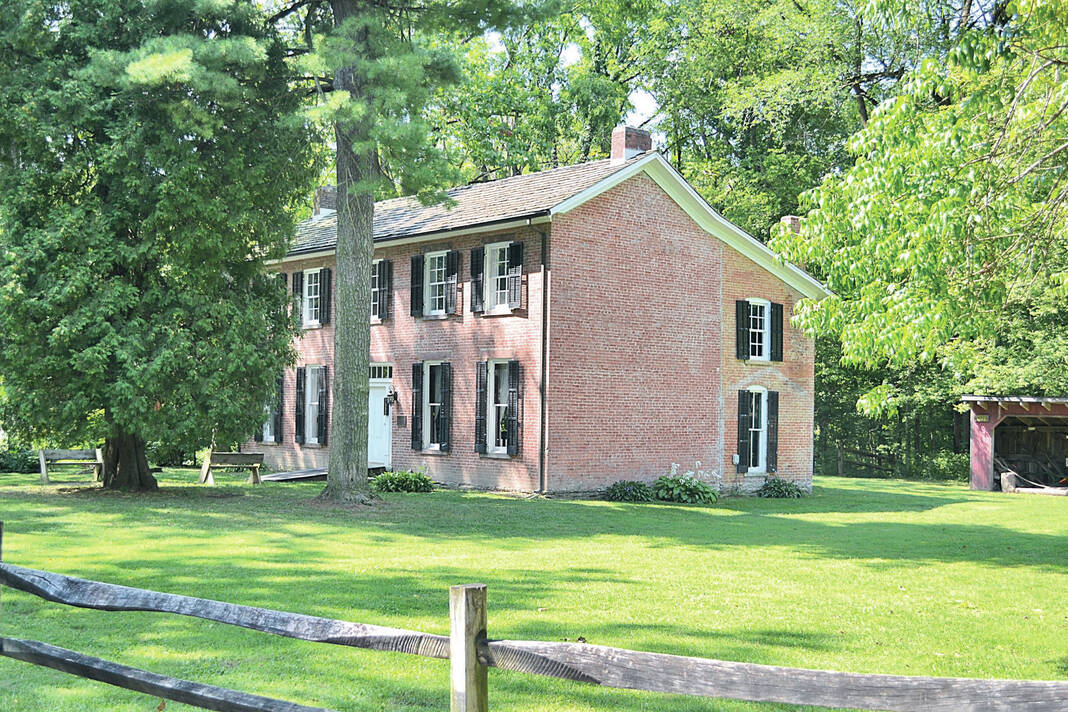
F. Bronnenberg Jr. House
Submitted
Union is the smallest township in Madison County with 19 1/2 square miles within its borders.
But, when it was first organized as the county’s sixth township on May 3, 1830, it was much larger.
As originally carved out from Anderson Township by order of the board of county commissioners, it encompassed 63 square miles.
Its northern part was eventually absorbed with the organization of Richland (1834), Monroe (1836) and Van Buren (1837) townships, creating its present size.
The commissioners designated the name of Union without leaving any explanation for the choice.
Over time some believed it was given that name on account of its being located opposite the point where the counties of Henry, Delaware and Madison form a “union.”
The more widely accepted reason is that the name was selected in recognition of the Federal Union of States.
That explanation is more reasonable owing to the fact that, by 1830, the United States of America had successfully withstood two attempts by England (1775-1783, 1812-1815) to defeat it and was no longer threatened.
In other words, the union forged by two wars was now secure.
William Dilts is believed to be the first settler.
He arrived from Montgomery County, Ohio, in March, 1821, and settled on the east bank of Mill Creek in what is now Chesterfield.
He remained at this site for about four years, but not having sufficient financial means to enter the land, it was claimed from under him by Joshua Baxter in 1824.
Mr. Dilts then moved to Delaware County, where he remained for four years.
In 1829, he returned and entered 160 acres of land in the same section he previously occupied, only on the south side of the road that is now Indiana 32.
He erected a double-pen log house in which he established the first hotel in the township.
About 1833, he built a large brick house, the first in the township.
It was at the site of Dilts’ first log cabin that Frederick Bronnenberg Sr. stopped with his family in June 1821.
He was on the way to the prairie country in Illinois when one of his oxen gave out.
While seeking assistance from Dilts, Bronnenberg was told there were no roads to speak of farther west; thus, he decided to locate in the area.
He moved his family into an abandoned cabin that had previously been occupied by an Indian trader named McChester.
In the spring of 1822, he built a cabin of his own north of White River.
Nearby he erected a saw mill.
Burrs for grinding both corn and wheat were added later.
The family eventually became large landholders in the county, particularly in Union Township.
A major influence in the development of Chesterfield was the arrival of Amasa Makepeace.
He and his wife, Betsey, were married about 1800 in Norton, Massachusetts.
The couple moved to Chesterfield, New Hampshire, where they remained until 1818, when they and their children moved west, eventually arriving here in 1823.
In 1825, Makepeace built the first grist mill on Mill Creek, affording the settlers in the east central part of the county a place to take their grain to have it ground.
The couple’s son, Allen, is credited with the laying out of the town in 1830.
Known first as West Union, it was renamed Chesterfield in 1834.
Because Allen was given the responsibility of laying out the town, it seems natural that his influence caused the town to be named Chesterfield, naming it after his birthplace in New Hampshire in 1802.
It was a pioneer custom practiced all across our nation.
When the Indianapolis & Bellefontaine Railroad was completed through Madison County in 1852, Chesterfield experienced several years of unusual business activity.
The population increased to such an extent that in the late summer of 1857, a petition was circulated and signed by a large majority of the citizens, asking for incorporation as a town.
An election took place on Jan. 2, 1858, with 32 votes cast in favor and none against.
On March 11, 1858, the county commissioners ordered the incorporation.
Stephen Jackson is Madison County Historian.